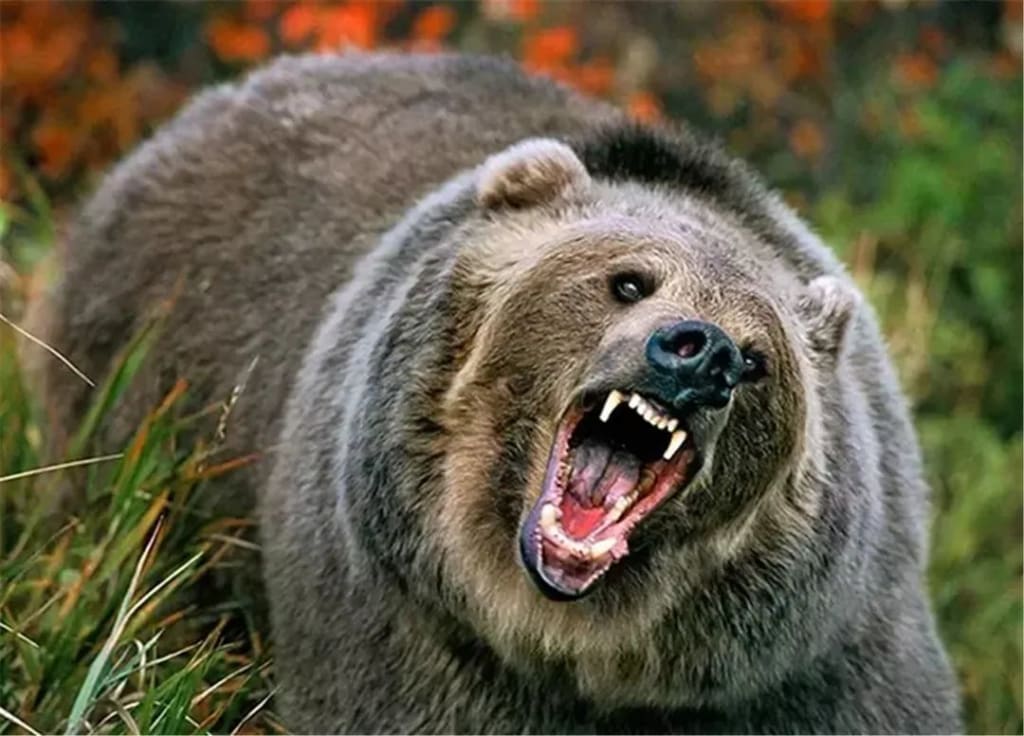Can a 300kg brown bear stop 9 grey wolves from attacking? Actual combat proves that small wolves are useless
Can a 300kg brown bear stop 9 grey wolves from attacking?

Perhaps because people have always worshiped wolves or wolves, they seem to have transcended the category of ordinary wild animals and become a spiritual totem full of symbolic meaning.
In the wild, this canine, who knows how to work more efficiently as a team and possesses extraordinary stamina, seems to be invincible and intimidating any competitor.
About 8 million years ago, wolves began to appear in Asia, and gradually radiated to the entire earth continent with their own competitive advantages.
The body length of extant adult wolves is generally 105-160 cm. The size and weight of modern wolves conform to Bergman's law. The colder the area, the greater the body size and weight of wolves. The largest extant is living in North America. The average body weight is 50-80 kg, and the average body length is about 1.8 meters.
The largest recorded North American gray wolf is 2 meters long, about 75 centimeters high at the shoulder, and weighs an exaggerated 90 kilograms! This is infinitely close to the size of an ordinary donkey.
Do you also think that a group of donkey-sized gray wolves with a bite force of about 700 PSI (pound force per square inch) (a lion bite force of about 650 PSI), running at a maximum speed of 65 kilometers per hour, who would dare Fight with it?
Although they both live in the northern hemisphere, unfortunately, there are no Siberian tigers in North America, so we cannot see their peak battle. However, North America has an animal spirit totem that symbolizes wisdom, strength, loneliness and bravery - the North American brown bear.
The North American brown bear first originated in Eurasia, and lived in North America about 50,000 years ago, and spread its branches and leaves in that new land. Today, the North American brown bear is the most widely distributed bear in the world. As one of the largest carnivorous mammals on land, the North American brown bear possesses unparalleled strength and size.
The average weight of adult females of North American brown bears is around 180 kg, while males are larger, with an average weight of 180-360 kg. The average body length of the North American brown bear is about 1.9 meters, the shoulder height is 100 cm, and the largest recorded adult male individual reaches 680 pounds!
The survival advantage of the solitary brown bear in the wild is not only reflected in their size. Although their size does look bulky, the North American brown bear can run at a speed of 56 kilometers per hour and can easily climb bare tree trunks.
Moreover, the strong body muscles can make its forelimbs explode with tons of striking force, and with the claw blade of about 10 cm, and the bite force of 1200 PSI, it can cause unimaginable damage to the opponent.
Can a brown bear weighing about 300 kilograms block the attack of a gray wolf weighing about 80 kilograms?
Because of the long-standing rivalry between gray wolves and brown bears in North America, much research has been done on their interactions. Often, their conflict is either to protect the young or to compete for prey.
When gray wolves and brown bears compete for prey, one gray wolf may step up to try to distract the brown bear, while the other wolves rush to eat. If the brown bear is not affected, it will go to the gray wolf.
If a gray wolf attacks a brown bear, it usually bites the bear's hind legs quickly. The brown bear will then sit and protect itself. Death or serious injury rarely results in such a fight.
Next, let us use the most classic case to analyze the interaction between North American brown bears and North American gray wolves when they compete for food.
This is a confrontation between a North American gray wolf and a North American brown bear that a wildlife photographer once photographed in Banff National Park, Canada. According to reports, the battle lasted for 4 days and was called "Battle of Nanuk Mountain". "! At the beginning of the battle, it was just a gray wolf and a brown bear competing for prey, and the original owner of the prey was unknown.
But then the pack (nine adult gray wolves) included a pregnant female wolf, and the brown bear, who had been dominant, ignored the pack and sat on the ground playing with the pelts of its prey, which escalated quickly. Because the wolf king not only wants to protect the she-wolf from any harm, but the action of the brown bear is a great humiliation for the wolf king.
Much of the fight scene in that fight went something like this: the bear stands on its hind legs and slams the ground with its claws to assert its strength and claim to its prey. And the wolves held back and tried to scare the bear away by surrounding it.
So the two animals started a tug-of-war, chasing each other, attacking and defending. When brown bears are tired, they will lie down on the ground to eat their prey, and when wolves are tired, they will take a nap nearby. No one was killed or injured during those 4 days, because the wolf king did not want to take the risk, and the pack knew that a single blow from a brown bear's claws could crippling or killing them.
Of course, the brown bear didn't want to be besieged by 9 wolves either. Because the brown bear also knows that if it is really desperate, a group of adult gray wolves may definitely cause harm to it, or even endanger its life.
However, this seemingly drawn battle actually ended in the brown bear eating the prey, which means that the brown bear actually dominated.
The "Battle of Nanook Mountain" is a very classic case, which has provided a lot of help for our research on the competition between North American brown bears and North American gray wolves in the wild. In the wild, wolves or wolf kings are more risk-aware. They rarely risk death to attack more powerful predators, and generally choose to take the initiative to avoid them.
And the North American brown bears, which are powerful in single combat, are more concerned about how many gray wolves their opponents are. Do they want to fight to the death? Obviously, 9 adult gray wolves who don't want to fight to the death can't make the brown bear submit number of gray wolves.
Therefore, in reality, the outcome of the battle between brown bears and gray wolves depends on the size of the gray wolf pack. Small gray wolf packs are basically useless against brown bears. At least 15-20 adult gray wolves are required to have an overwhelming advantage. win. This is why in the wild we see more of what is shown in the picture below.
About the Creator
witty lukas
The doubts held by human beings are the germs of science
Enjoyed the story? Support the Creator.
Subscribe for free to receive all their stories in your feed.






Comments
There are no comments for this story
Be the first to respond and start the conversation.